Elizabeth Marilla is a mental health worker, writer, picture taker, hiker, and mom living in rural southeast Iowa. Connect with her on instagram @iowa.underfoot. -promoted by Laura Belin
Wildflower love and layperson learning, often nurtured by the wisdom shared on Iowa wildflower Wednesdays, has led to closer looks at lots and lots of plants, and subsequently to my wondering amateurishly at the beings the wildflowers host and nourish–basically bugs I’ve ignored for way too many years!
Many mornings I hike with my daughter. We take pictures, get silly, find mushrooms (and slime molds), stomp around. Her questions are getting much smarter than mine, and if she miraculously naps in the afternoon, I often spend that time learning about flowers and bugs from far smarter folks than I, hoping I will be able to answer her questions when she awakes.
Below are a few things we have wondered about together this spring and summer. If anyone would like to share what they know about these native bug/flower relationships in the comments, add bumble bee IDs, or correct any errors, I very much welcome learning from other enthusiastic Iowans.
Little bee bottom and Hairy wood mint (Blephilia hirsuta) at Big Grove Preserve in Johnson County. This mint family flower is found mostly in Eastern Iowa. Long-tongued bees are its primary pollinators.
Can anyone identify this bee by his little bottom? “Blephilia” is Greek for eyelash, which makes perfect sense! But “hirsuta” means hairy, which makes the whole name seem to mean “hairy eyelash!” The name is a bit redundant, but maybe a plant as positively hairy as this one has earned the extra!
Bumble bee on Virginia waterleaf (Hydrophyllum virginianum) at Whiterock Conservancy. Here is a lovely article about bee toes (tarsal claws), the highlight of this photo for me!
Confused Eusarca moths (Eusarca confusaria) nectaring on common milkweed (Asclepias syriaca) in my yard.
I wasn’t able to find much information about the relationship between Confused Eusarca Moths and milkweed, but they were very happily feeding on this particularly fragrant plant in my overgrown field for several nights. They were hard for me to ID, in part because their coloring varies a lot, and in part because I had no picture of their dorsal side at the time, and so I felt very validated when I learned that this confusion for other moths may be how they got their name.
Male Delaware skipper (Anatrytone logan) nectaring on common milkweed. Quick little skippers to spot in June and July, if you are quick too. Likes pink, purple, and white flowers best–relatable for my toddler who also strongly prefers certain colors of food to others!
Sometimes when looking for Monarch caterpillars on milkweed, you really do find Monarch caterpillars on milkweed. I think what initially charmed us as a friendly smiling face is really a gooey behind. Also, I just learned that Monarch caterpillars headbutt when food is scarce.
Monarch (Danaus plexippus) on Allegheny blackberry (Rubus allegheniensis), my first monarch butterfly of the year.
My daughter’s favorite book is Jamberry, by Bruce Degen, which has a line that goes, “Rumble and ramble in blackberry bramble! Billions of berries for blackberry jamble!” Until learning about this plant, we did not know that a bramble is an actual category of plant (not merely a part of the woods that is prickly and unnavigable) with its very own Wikipedia page.
Bumble bee on Wild white indigo (Baptisia lactea) at Whiterock Conservancy. More tarsal claw content for your pleasure! The bees start with the lower (female/pistillate) flowers, which produce more pollen than the male flowers, and work their way up the raceme.
Another view of bumble bee on wild white indigo at Whiterock Conservancy.
Yucca (Yucca glauca), member of the agave family, is planted in many farmyards along our road. Though it looks like a desert plant, it is indeed native to western Iowa, in the Loess Hills. After reading Eileen Miller’s Wildflower Wednesday post about the 4 million-year-old symbiosis between yucca moths (Tegeticulla yuccasella) and yucca–each relies solely on the other for survival–I waddled out a bit pessimistically to check for the moths in the blooms by our mailbox, and there they were!
I was wonderstruck to see such a stunning example of obligate mutualism right there where all my junk mail arrives. Here is an article about the other creatures that enter into this epic four thousand millennia in the making.
Bumble bee with plump pollen sac photobombing the rattlesnake master (Eryngium yuccifolium) in my tiny “prairie” planting.
According to the Xerces Society, rattlesnake master is beloved by an “an astounding diversity of pollinators,” including predatory wasps. Monarchs and skippers also like its nectar. “Yuccifolium” means “yucca-like leaves.” This plant too looks like it belongs in a different landscape, but I’m so happy it’s here.
Little Wood Satyr (Megisto cymela), so stunning me with its silver speckles, I forgot to look at the plant for ID. These butterflies like to bask on tree leaves in the late afternoon and rarely feed on flower nectar.
Meadow Fritillary (Boloria bellona) on Butterfly milkweed (Asclepias tuberosa), a milkweed without “milk” (sap). These plants also attract hummingbirds.
Another image of meadow fritillary on butterfly milkweed. The larvae of this butterfly overwinter.
The fabulous native Candy-Striped Leaf-Hopper (Graphocephala coccinea) on common milkweed. I find I see lots of other tiny perfect things I’ve never noticed before while looking for caterpillars. I can’t believe I lived without knowing this unforgettable little one for so many years. I do hope you will Google this creature for photos taken by folks with better cameras than I, or go ogle it with your own unmediated eyeballs. They are among the best jumpers out there!
Pearl Crescent (Phyciodes tharos) on butterfly milkweed in the garden. Adult Pearl Crescents are not at all picky eaters, but their larval food source is just asters.
Hackberry Emperors (Asterocampa celtis) puddling on likely coyote (Canis latrans) scat during an irruption at Stephens State Forest.
Scat is certainly not a wildflower, but even when the Hackberry Emperor does feed on a flower (not preferred), it does not pollinate, and so is considered a “cheater” butterfly. The hackberry tree is the only host and larval food source for these little guys.
They seem to be very friendly, and among the thousands spotted in this forest and along the gravel roads, several spent quite some time puddling on my sweat during a backpacking trip with Wander Women. Lots of butterflies eat scat, carrion, rotting fruit, etc. and are delightfully gross. I wonder if Bleeding Heartland might consider adding Scatty Saturdays?
These last pictures show a few of the wild Iowa things that we humans have eaten (in tiny quantities) outdoors lately.
Brambly Blackcap Raspberry (Rubus occidentalis):
Golden Oysters (Pleurotus citrinopileatus), which are not native but escaped from cultivation:
Chicken of the Woods (Laetiporus sulphureus):
Ramps (Allium tricoccum), also known as wild leeks:
I also share photos on instagram @iowa.underfoot. It is a private account, but I will happily accept your friendship if you seem like you are probably not a robot.

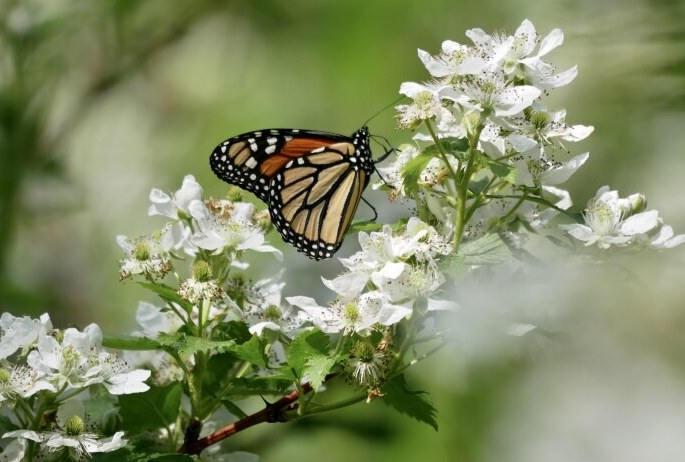
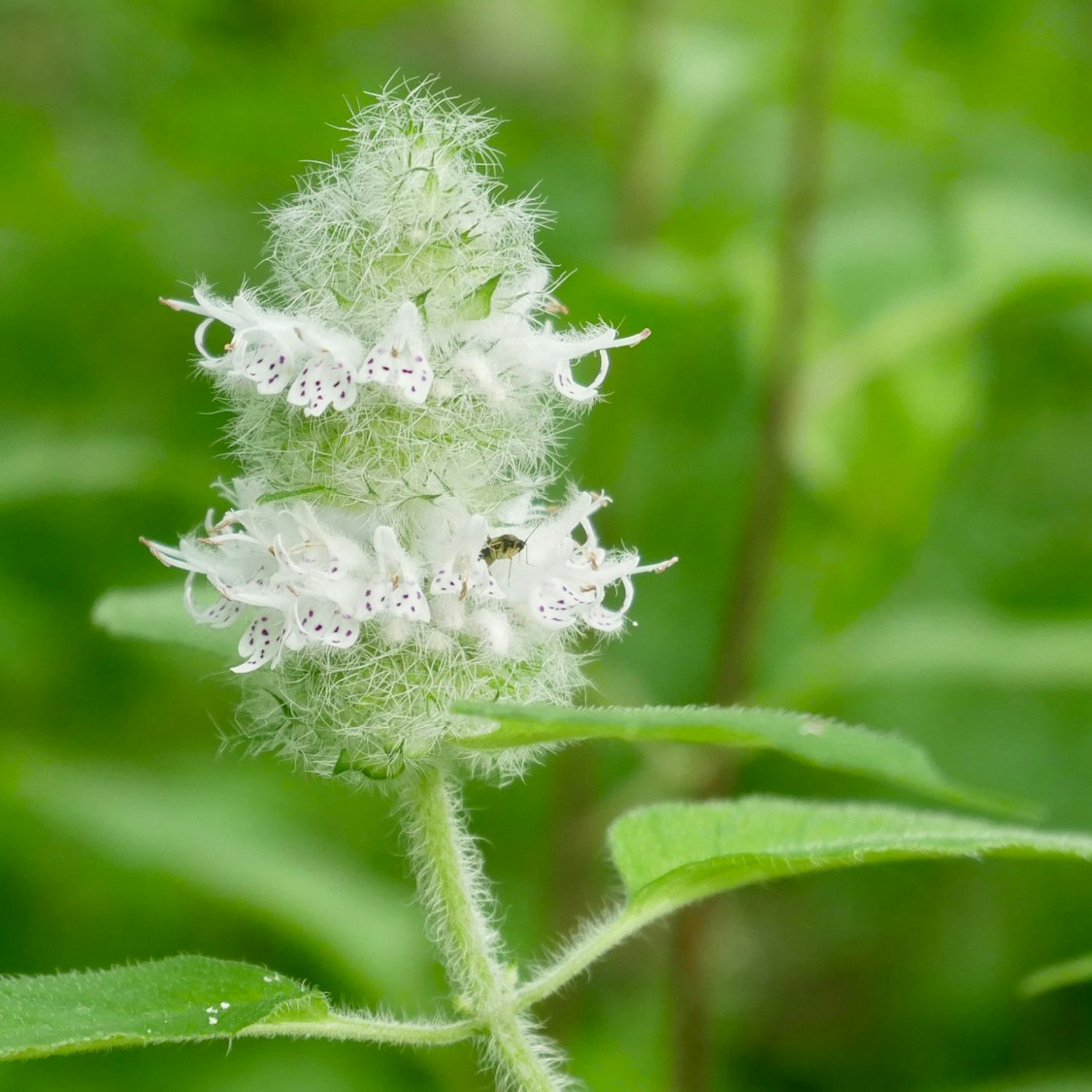
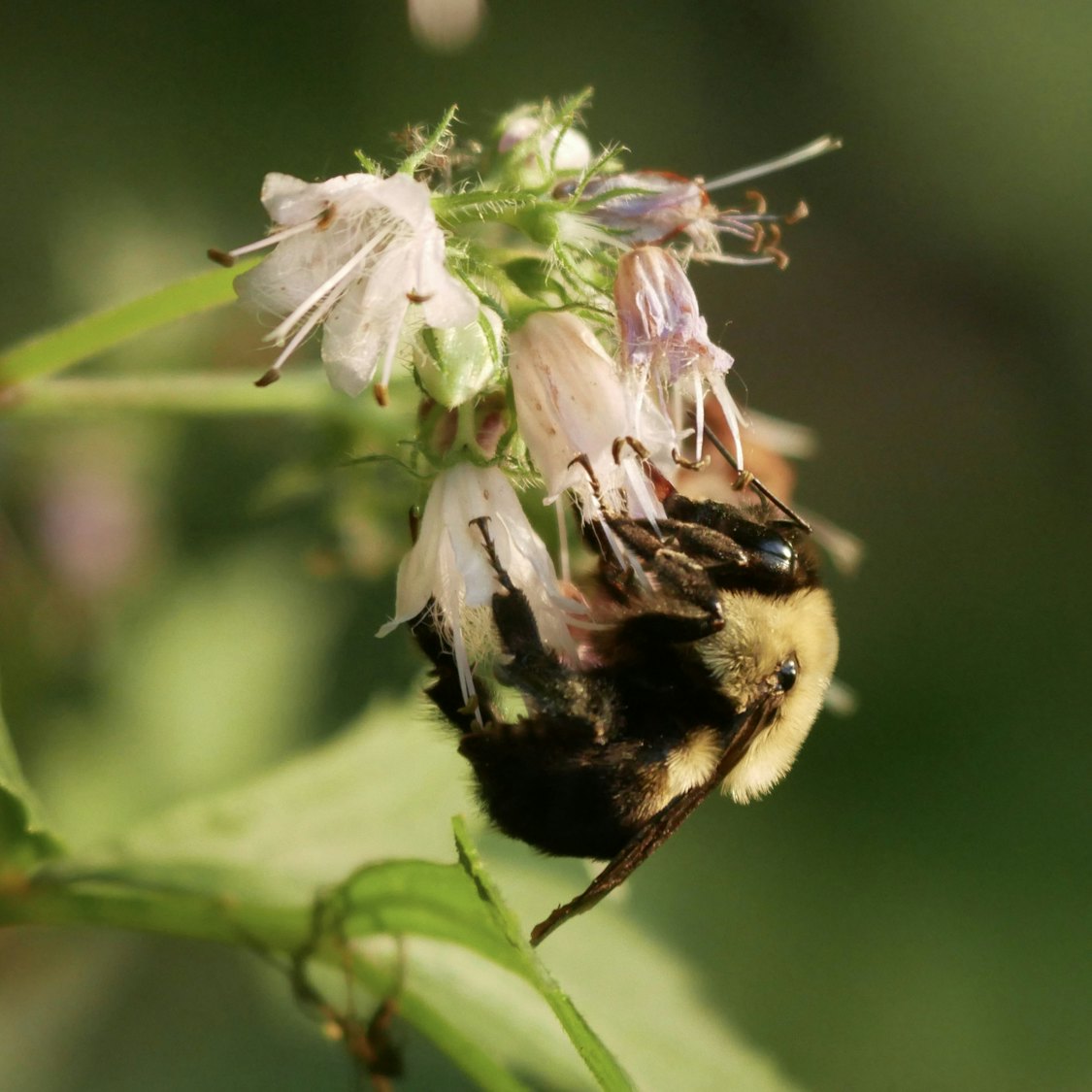
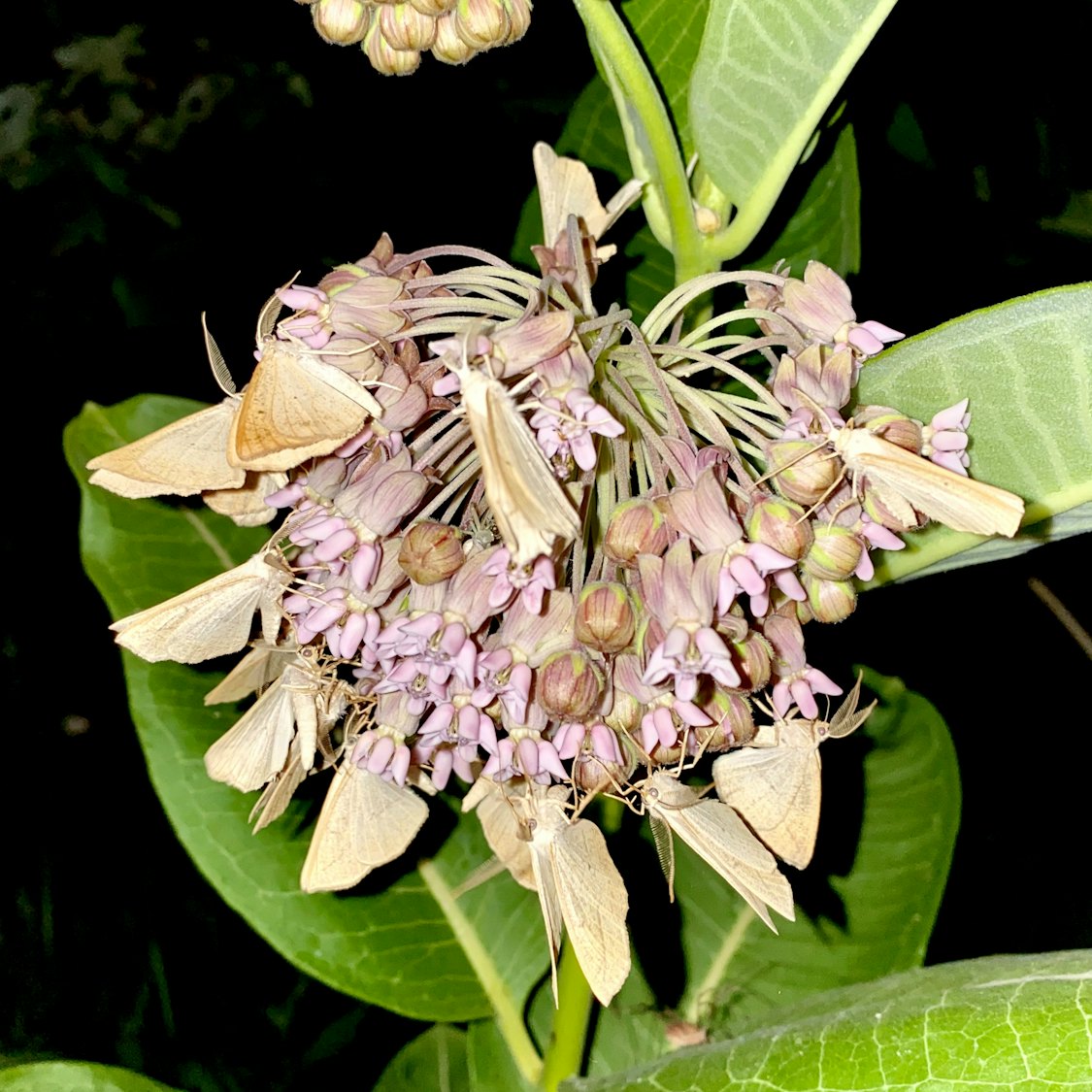
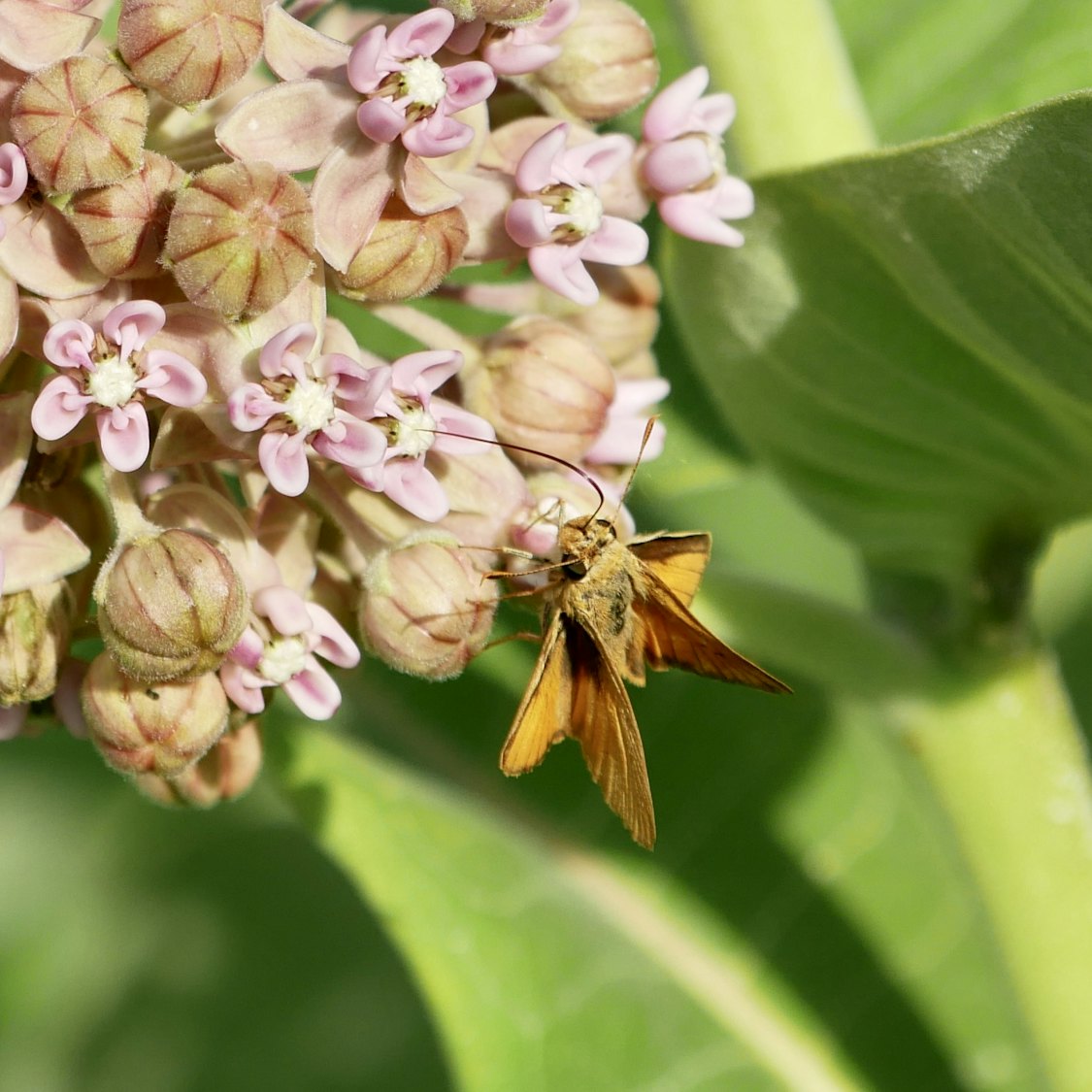
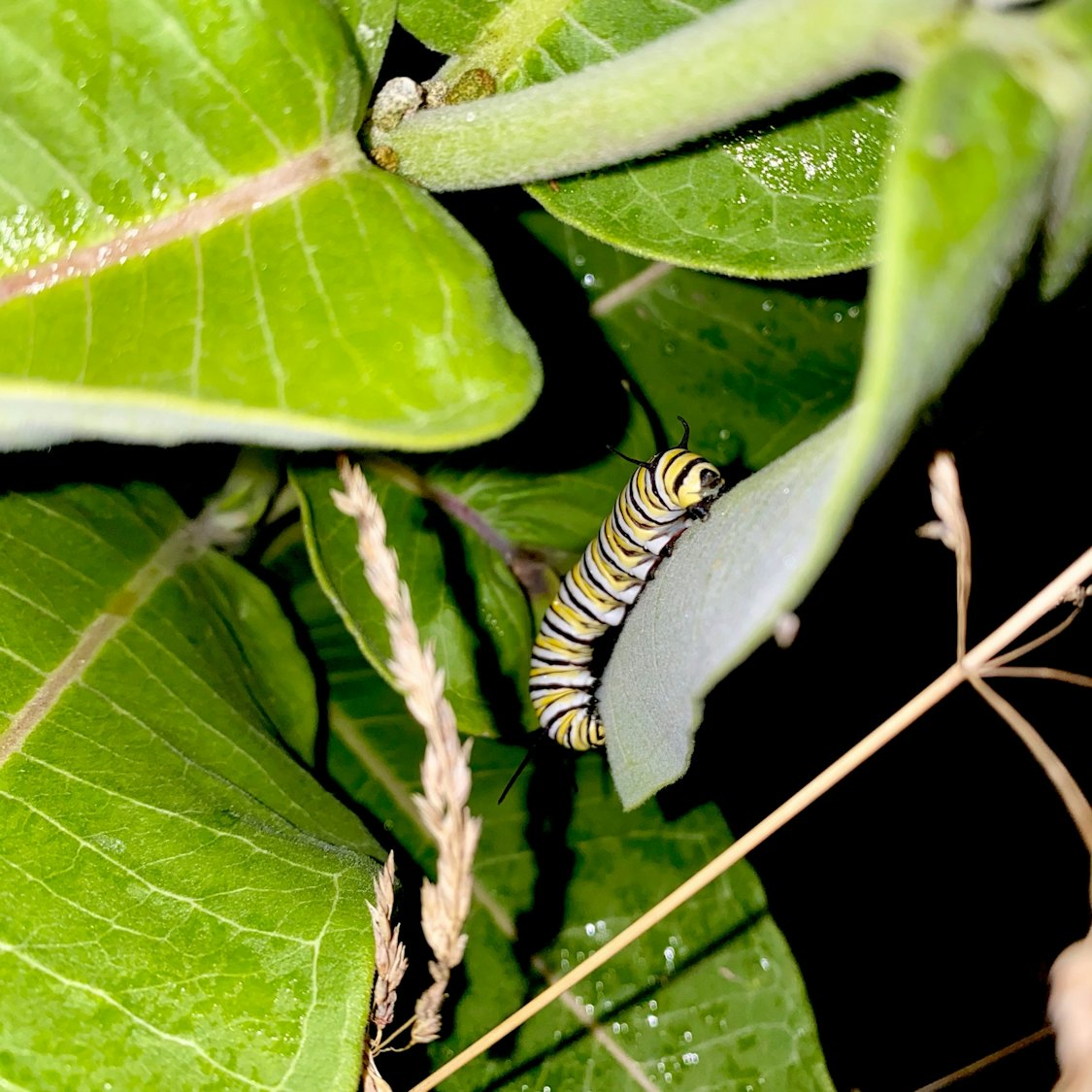


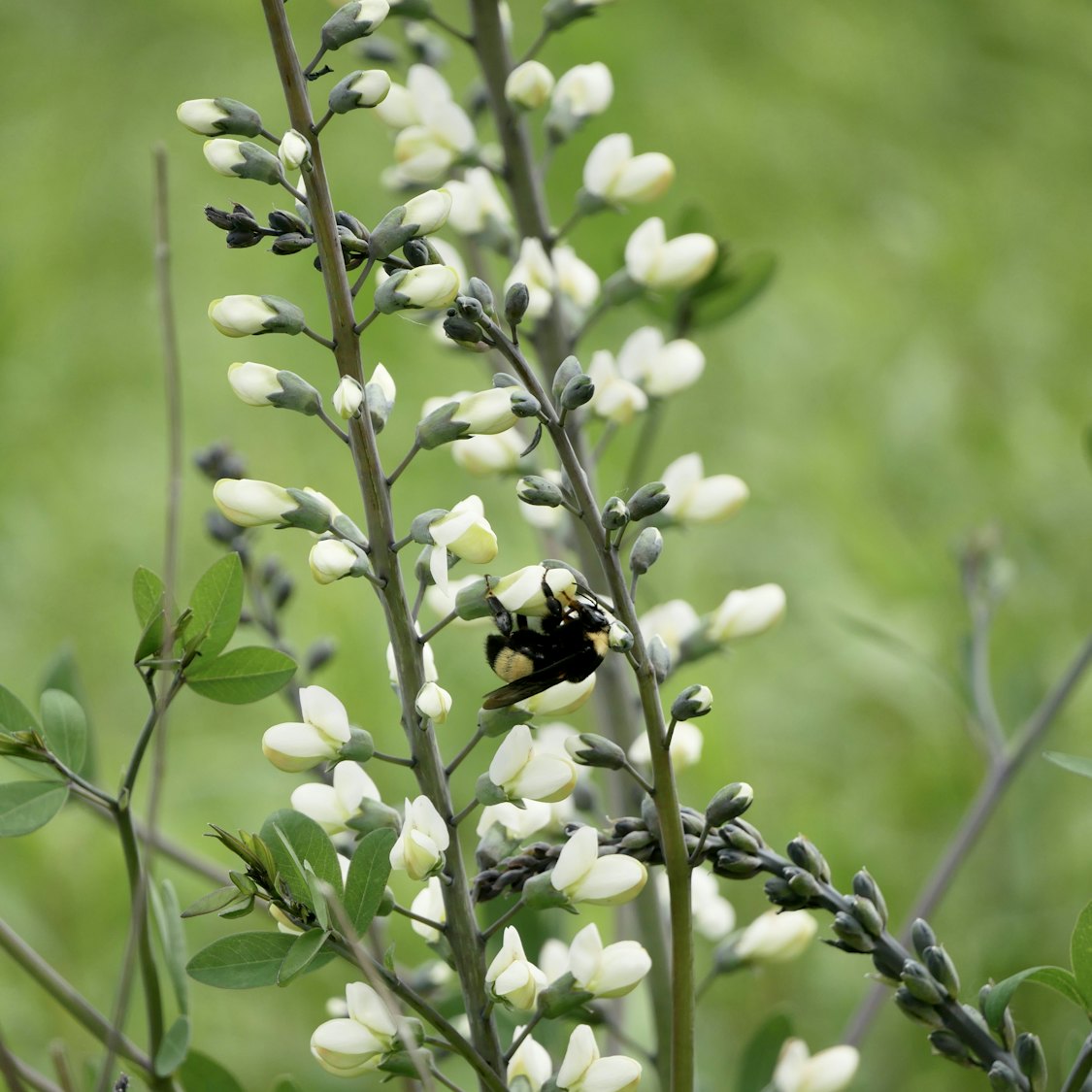
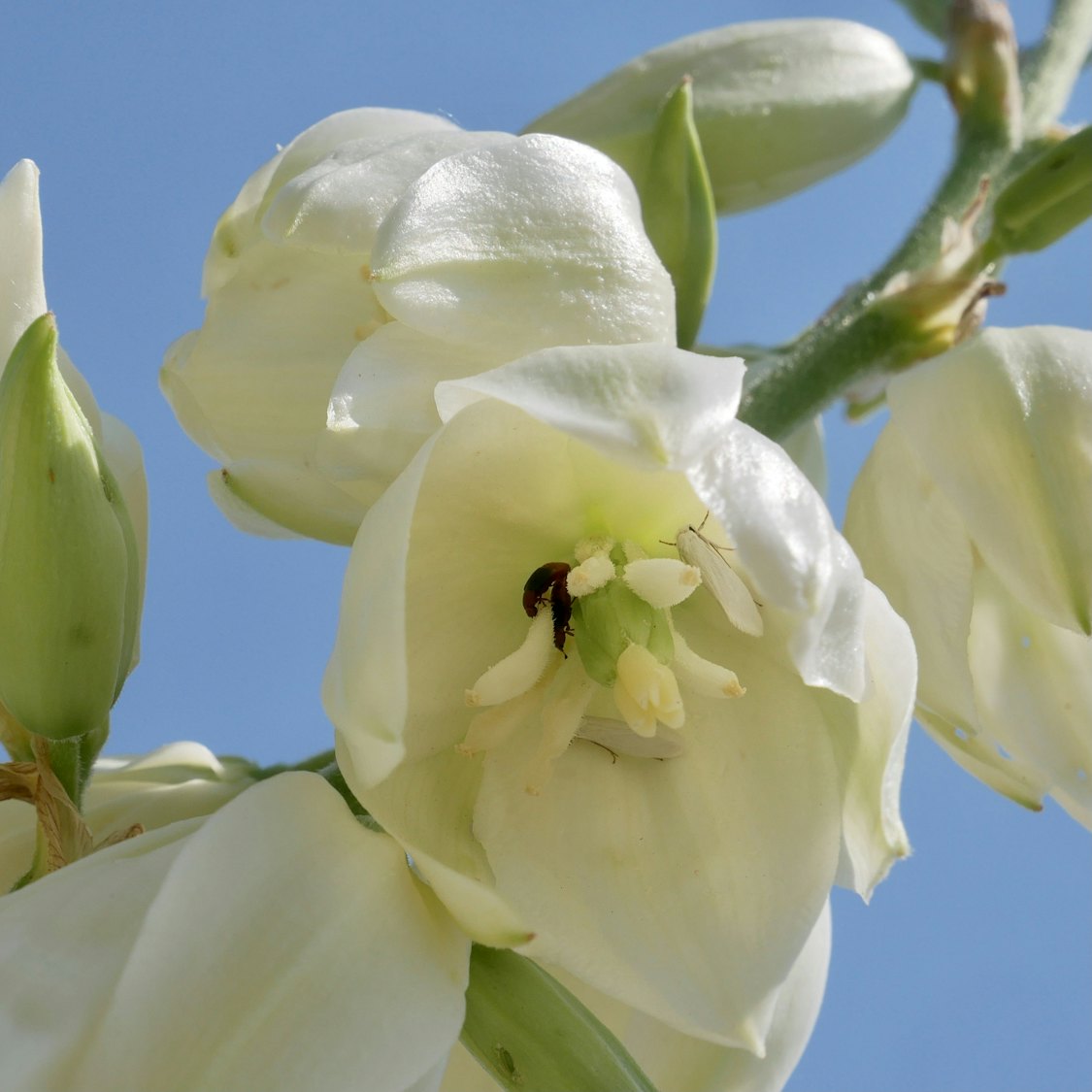
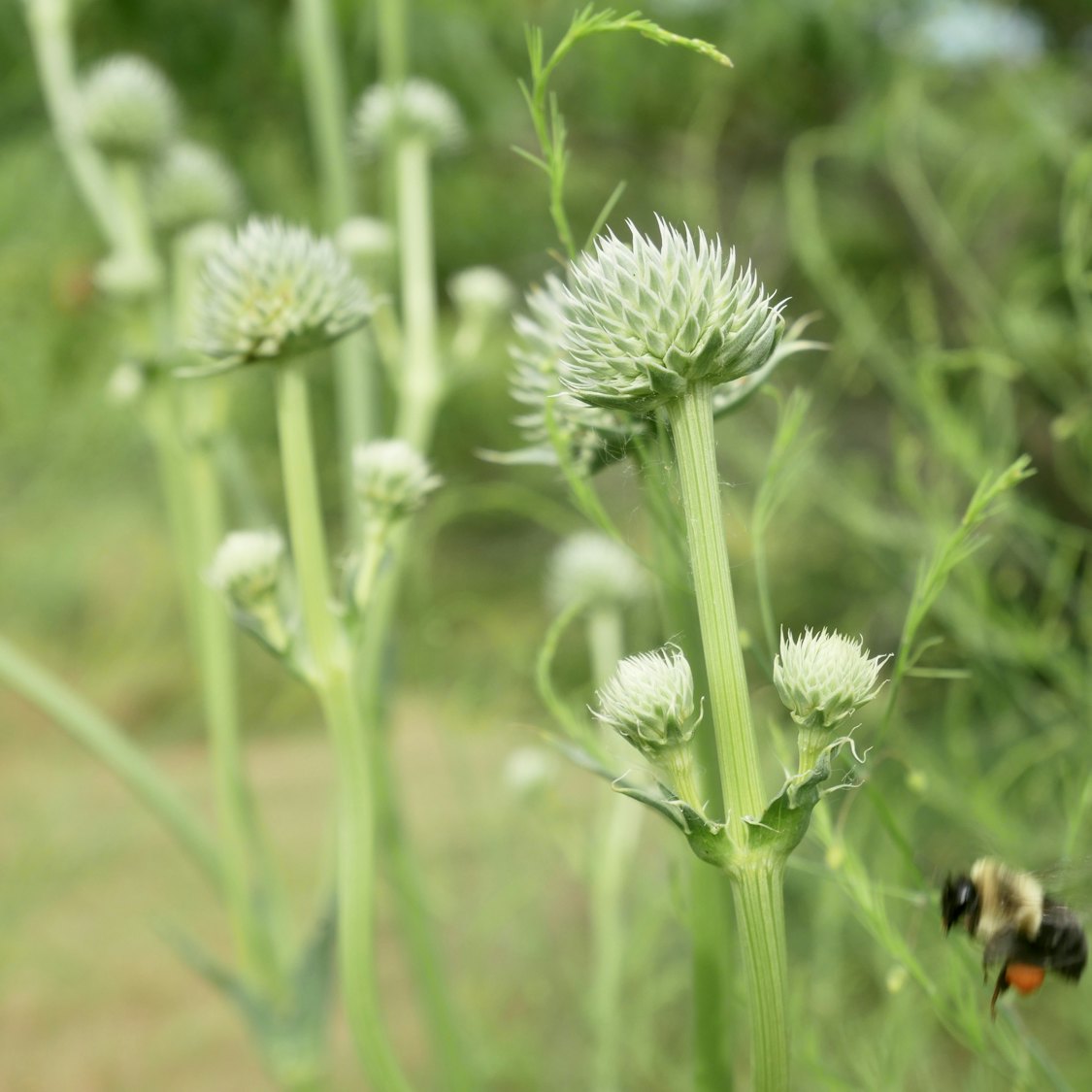
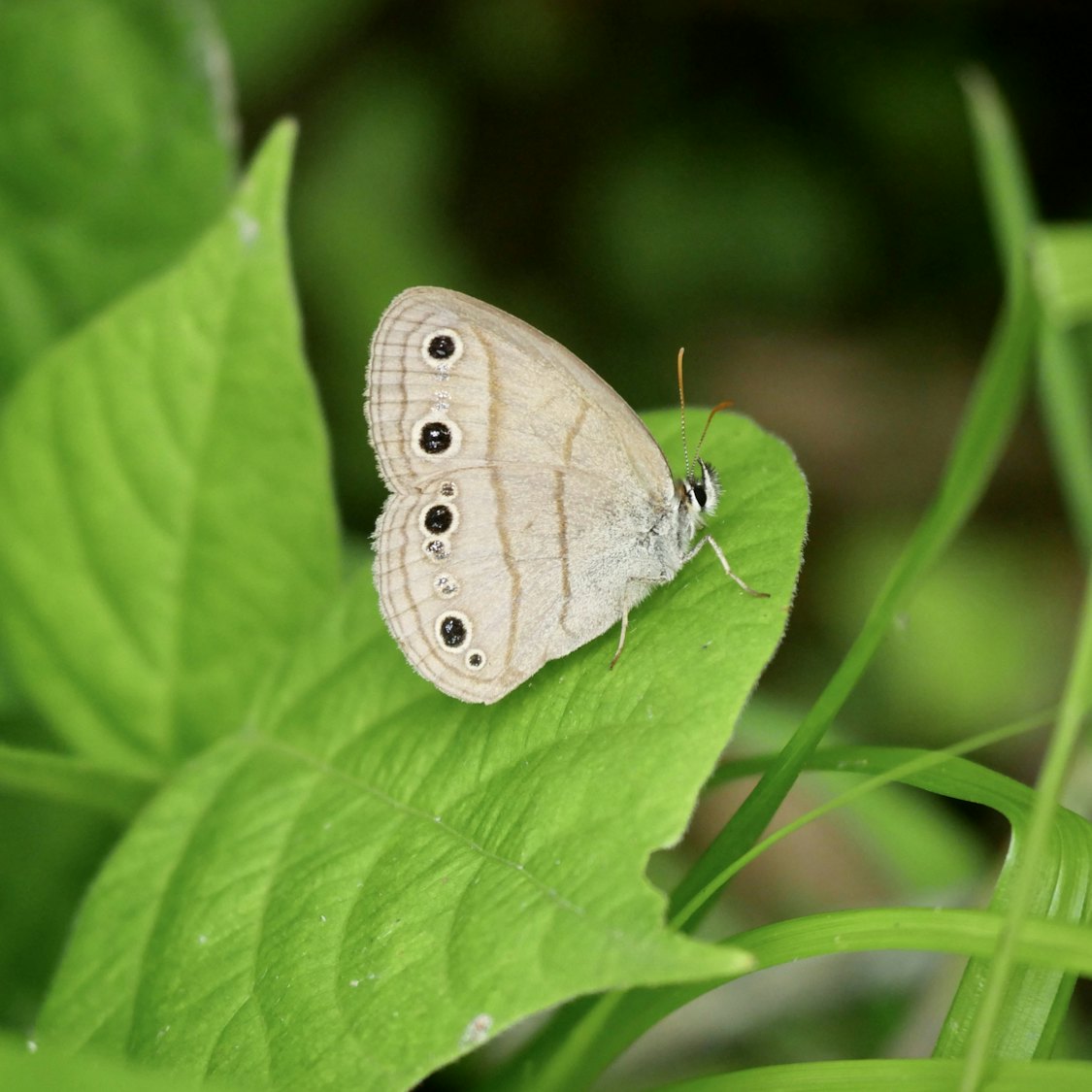
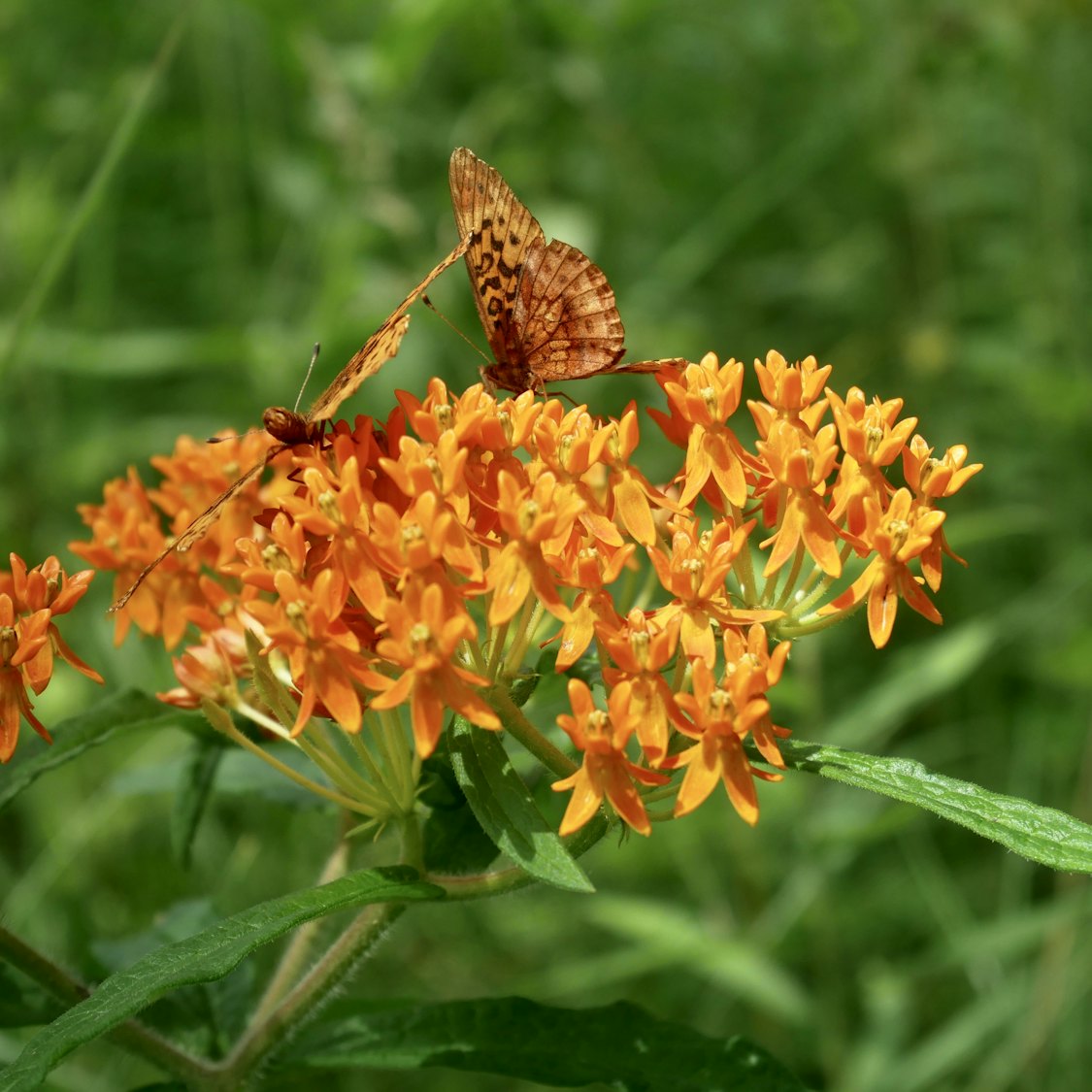
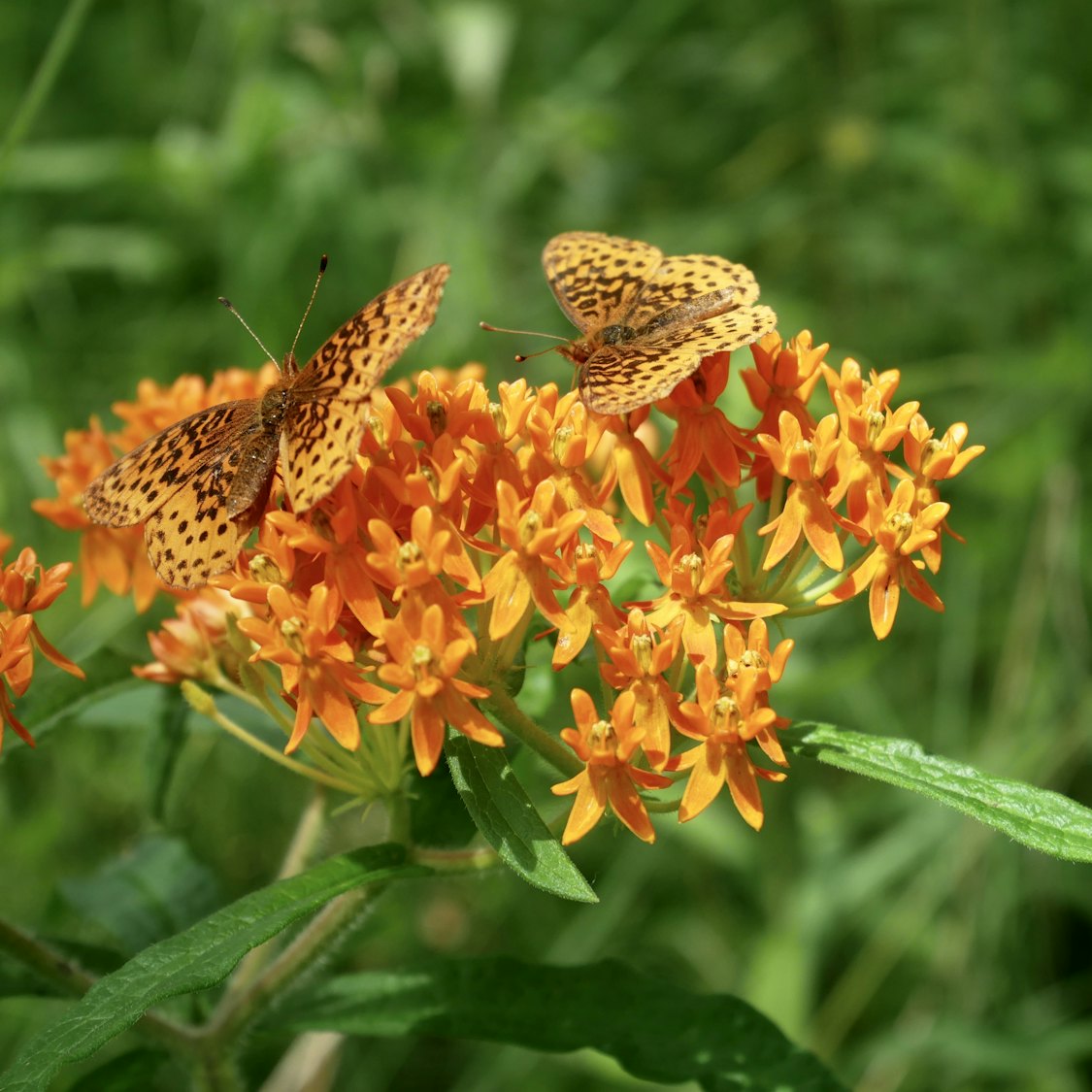
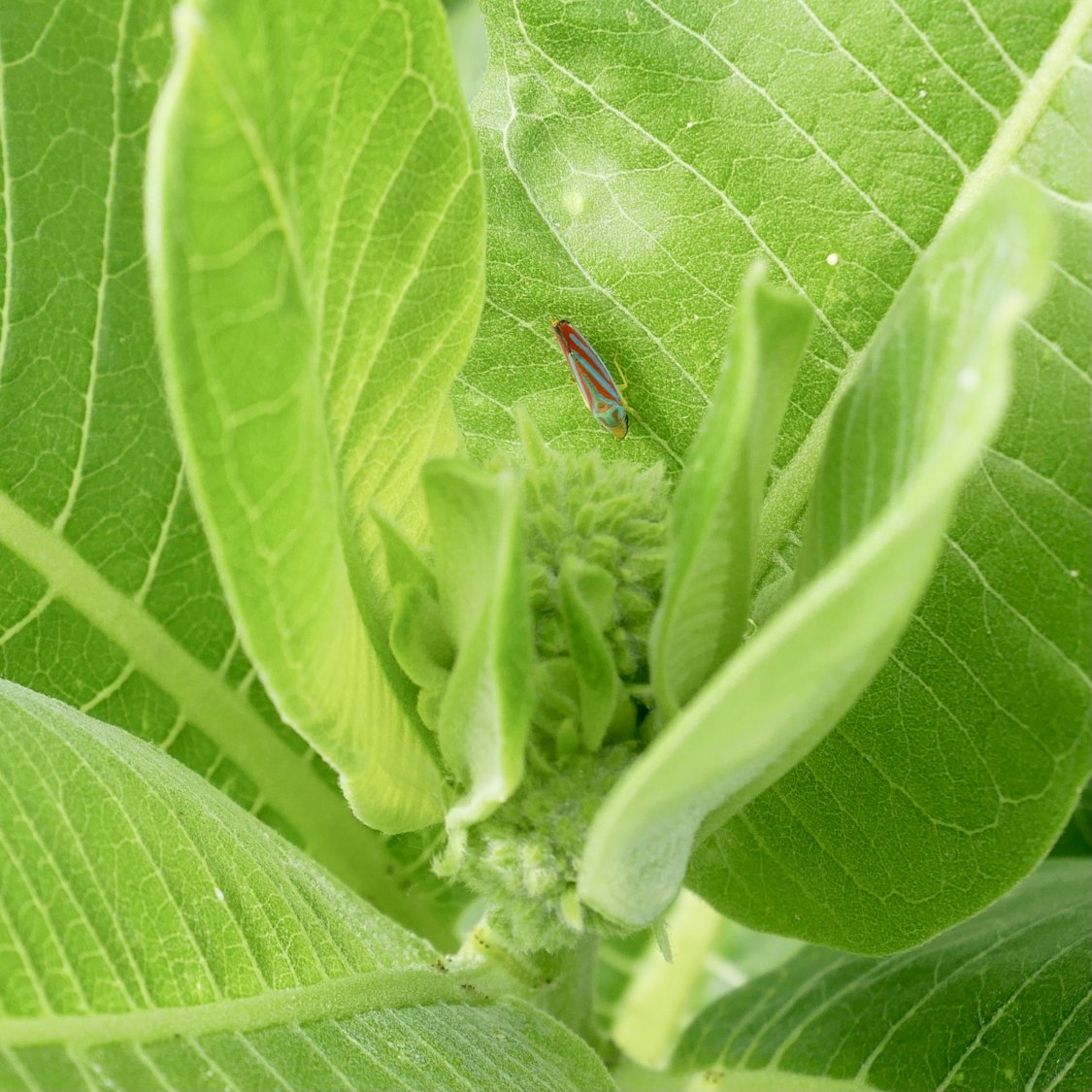
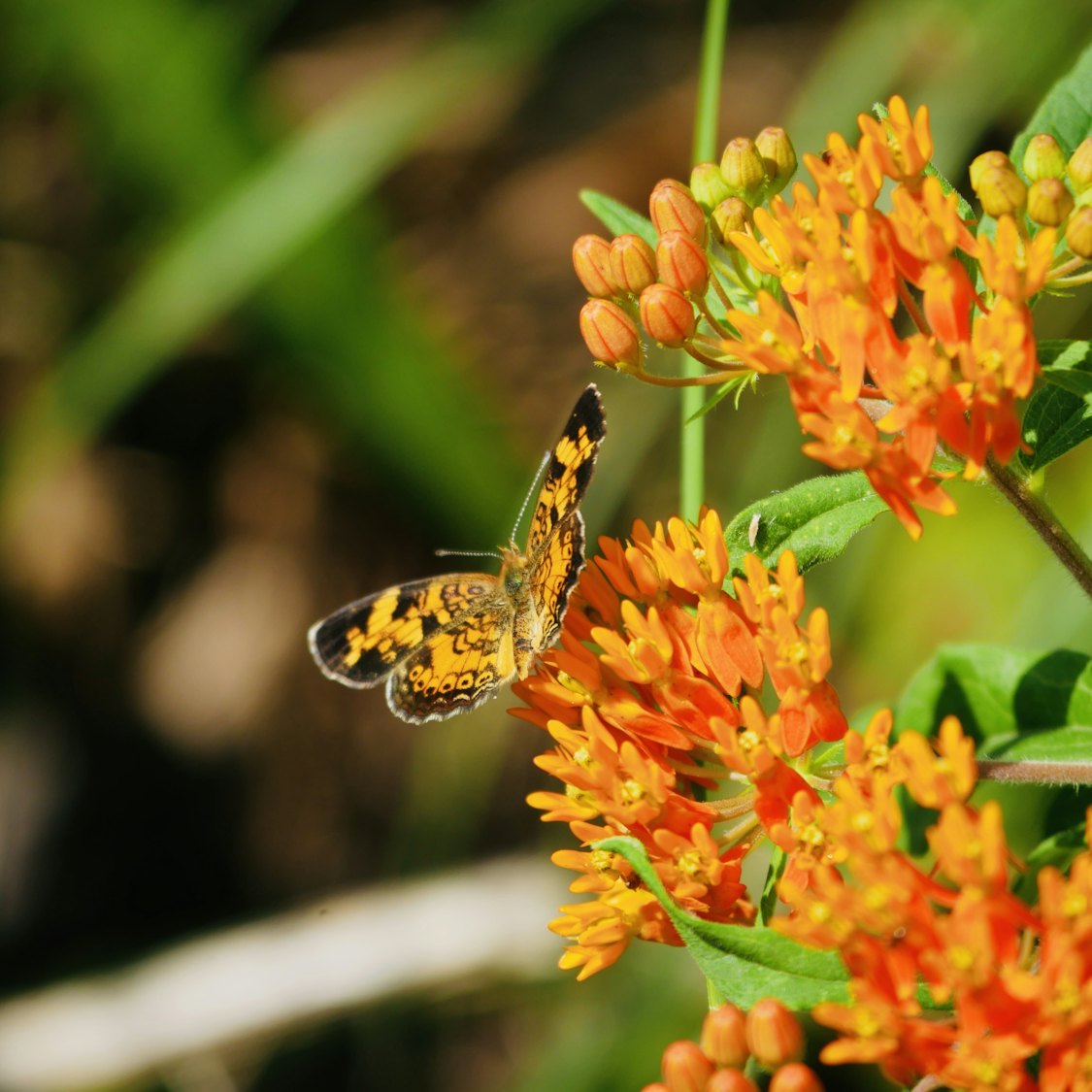
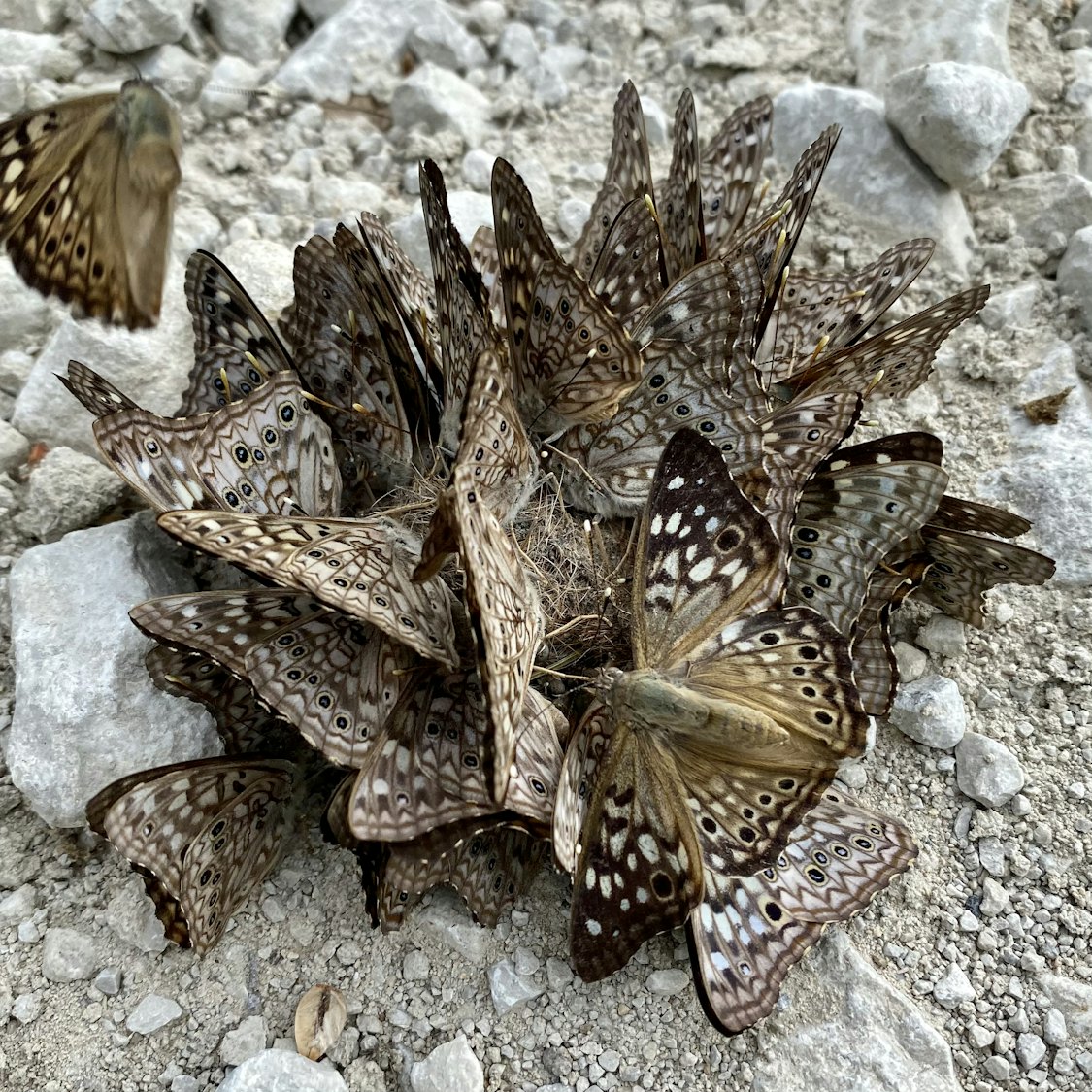
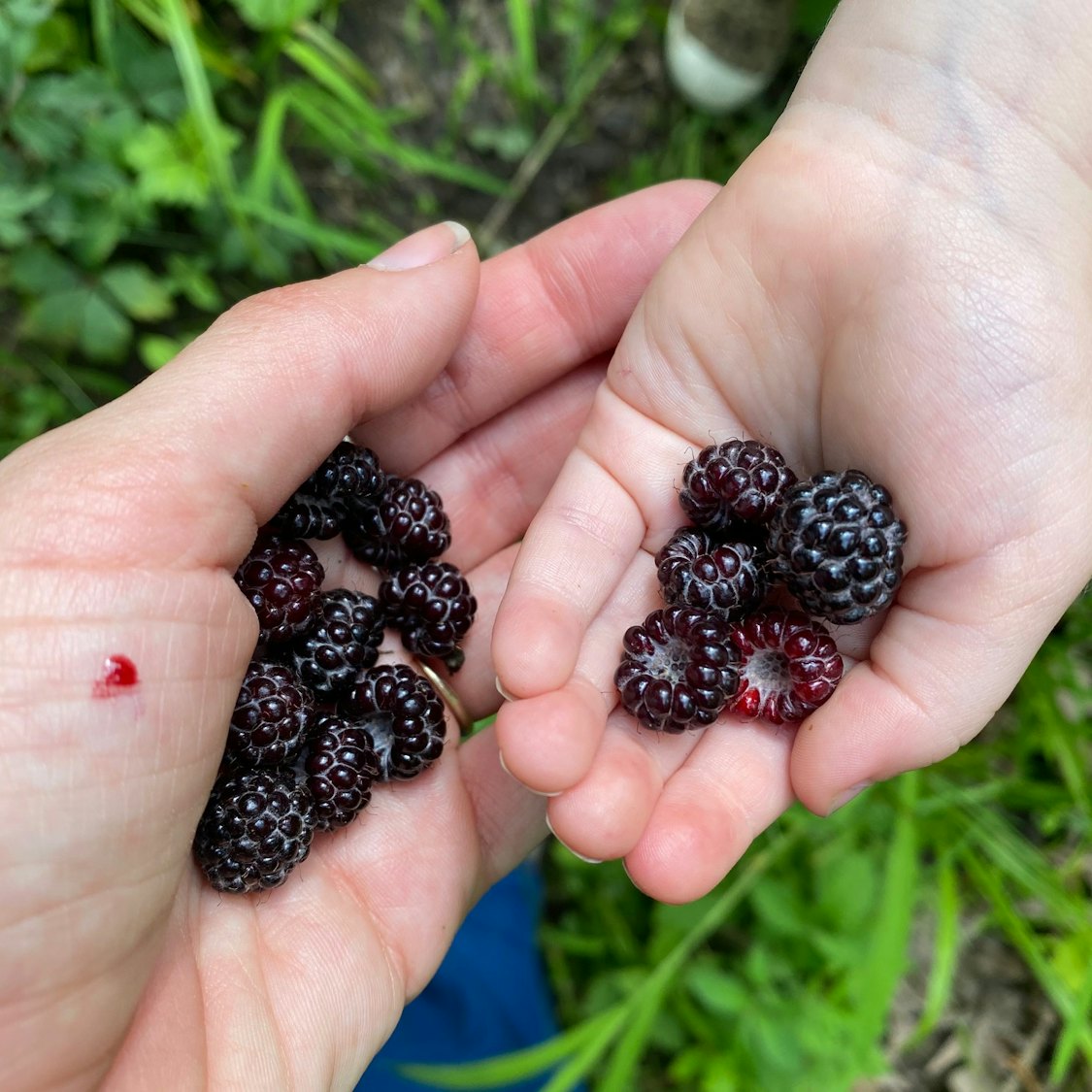
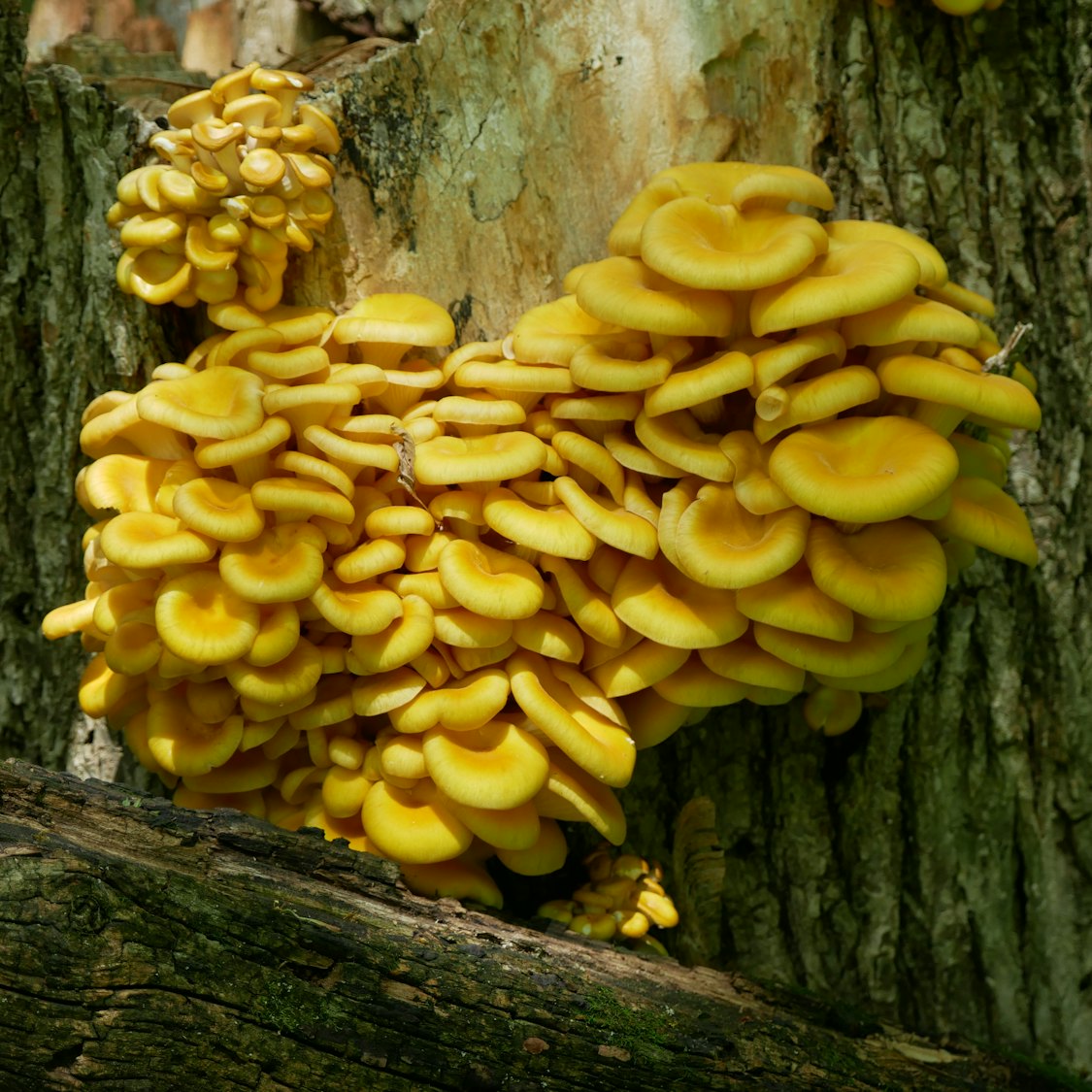
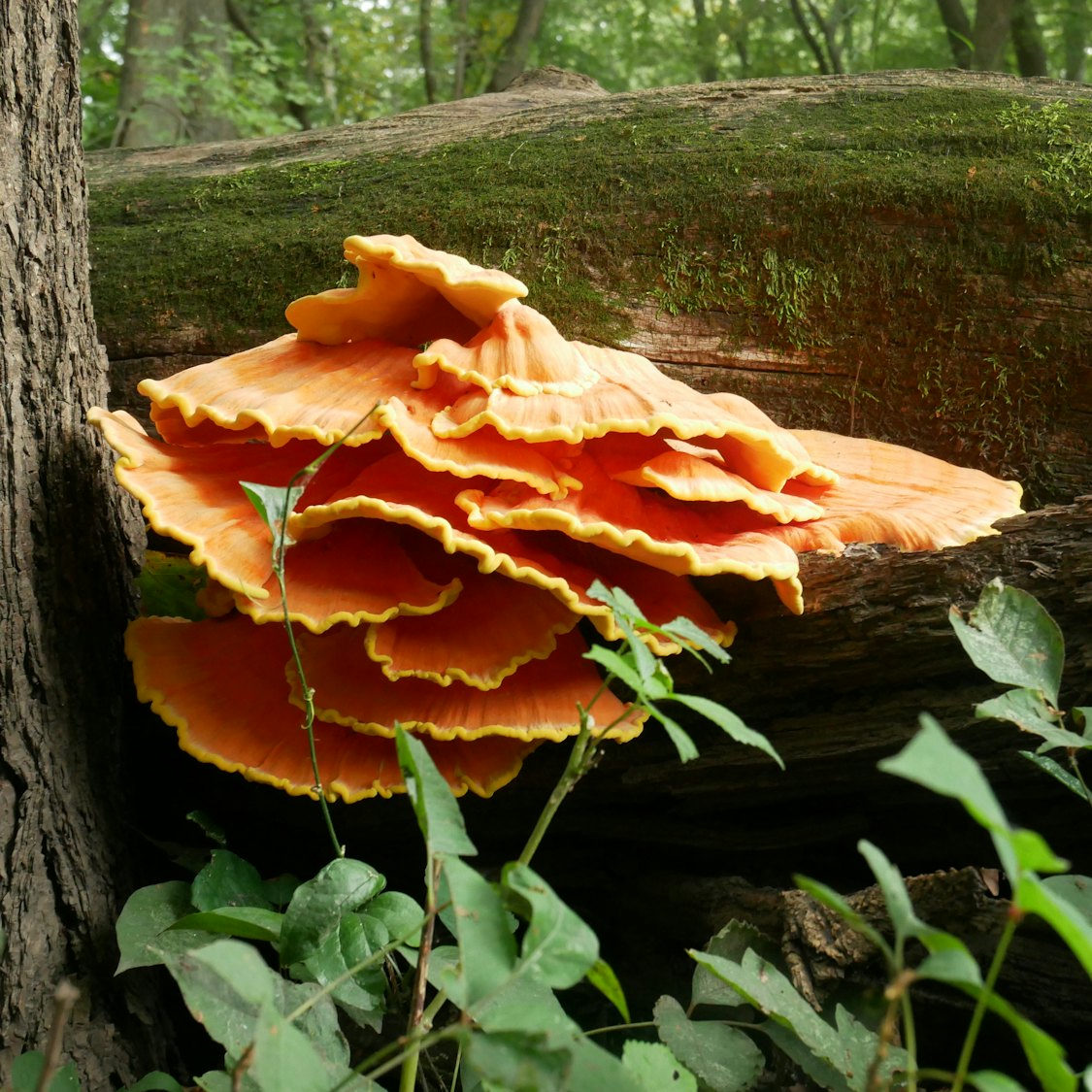
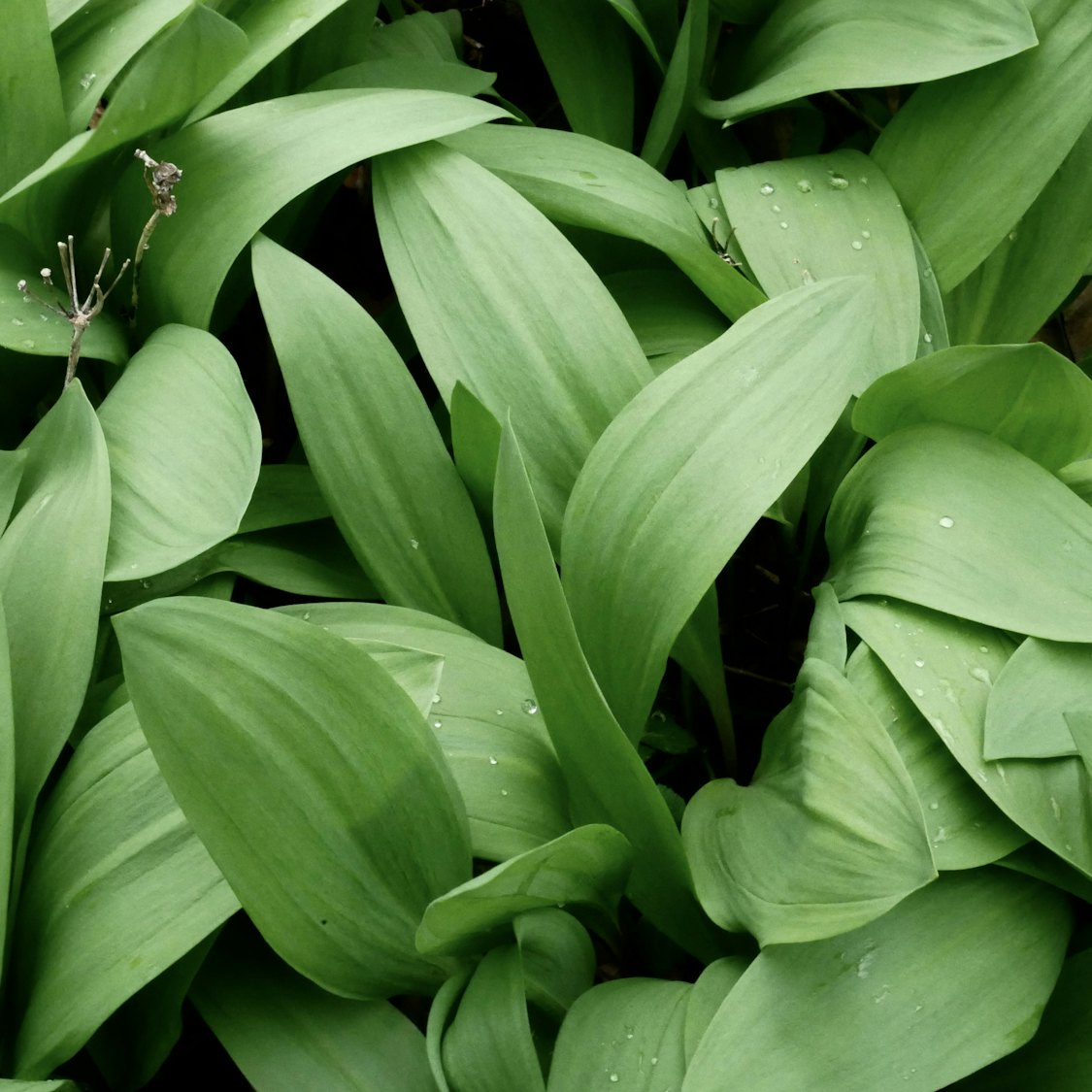
2 Comments
Much as I enjoyed reading these beautiful photos and reading the interesting prose...
…I am not happy to learn that yet another invasive exotic species has been loosed on North America. Here is what one researcher says:
“The golden oysters’ swift spread suggests that the native decomposers are being outcompeted and displaced.”
Great. Here we go again.
PrairieFan Wed 30 Jun 5:24 PM
Sorry...
…of course that should have been “seeing these beautiful photos,” which really are beautiful.
PrairieFan Wed 30 Jun 5:27 PM